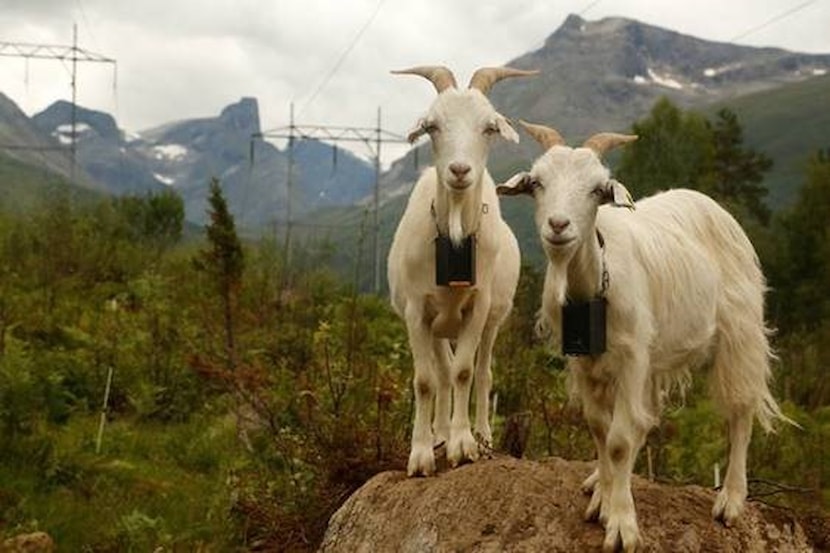Since 2017, Statnett has been running a trial project to investigate the effect of various types of grazing on growth of scrub and undergrowth in the transmission line routes. Today we normally clear away vegetation in transmission line routes at fixed intervals based on growth conditions and types of vegetation. Anything that can grow high enough to come into contact with a power line must be removed.
Four-legged helpers
Goats are increasingly being used to manage the landscape. We hope to be able to use goats to control the vegetation and even kill some trees before they grow too high. The goats ring-bark trees and bushes, which in theory should result in the root systems dying and prevent new suckers from growing. We have now tested the effect of grazing in the same area over several years, and investigated the difference between areas that have recently been cleared and areas that have been allowed to grow. The provisional results indicate that the goats clear much of the vegetation where they wander, but that they struggle to kill trees that have grown too high. The goats are better at controlling new shoots and will probably be more effective in thinning out vegetation over the long term in areas that have recently been cleared.
Keeping the goats within the transmission line route, and moving them efficiently along the route as the area is grazed, could involve potentially time-consuming fencing work. We have therefore used a newly developed technology called Nofence. Nofence, as the name suggests, is a virtual solution. Each individual goat is fitted with an electronic GPS collar. The collars stop the goats from leaving their designated grazing area. If the goats reach the edge of the grazing zone, they will hear a whistling sound. The sound gradually gets louder, until the animal turns back. If the goat does not turn back, it will get a small electric shock. The sound warning is both predictable and controllable for the goats. The collars act as a virtual barrier that works based on sound rather than vision.
The project is being implemented in collaboration with goat husbanders Vera Simonsson and Magnus Gabrielsen, who also work at Nofence. The project will continue through 2020, and based on the final report Statnett will prepare recommendations and guidelines on further use of goats as a clearing team.

